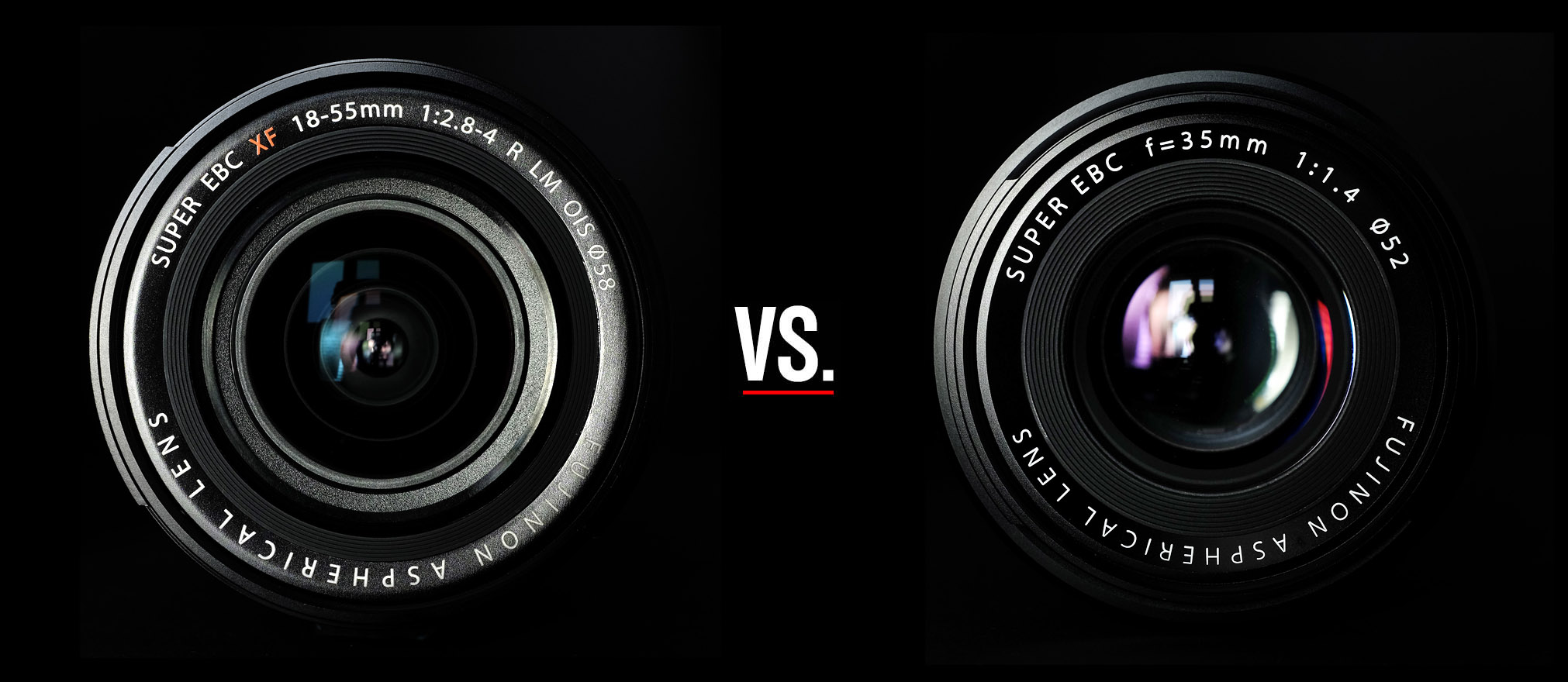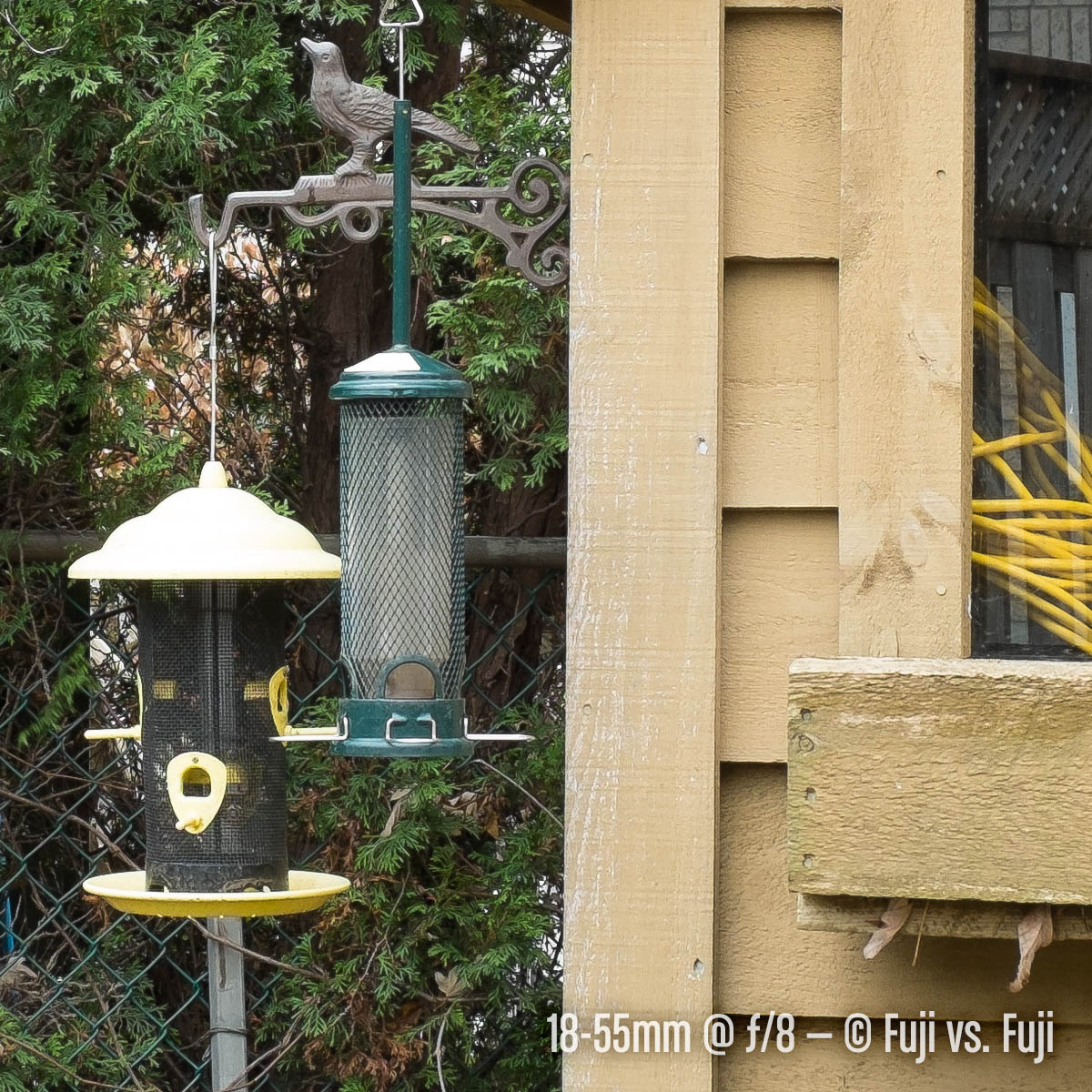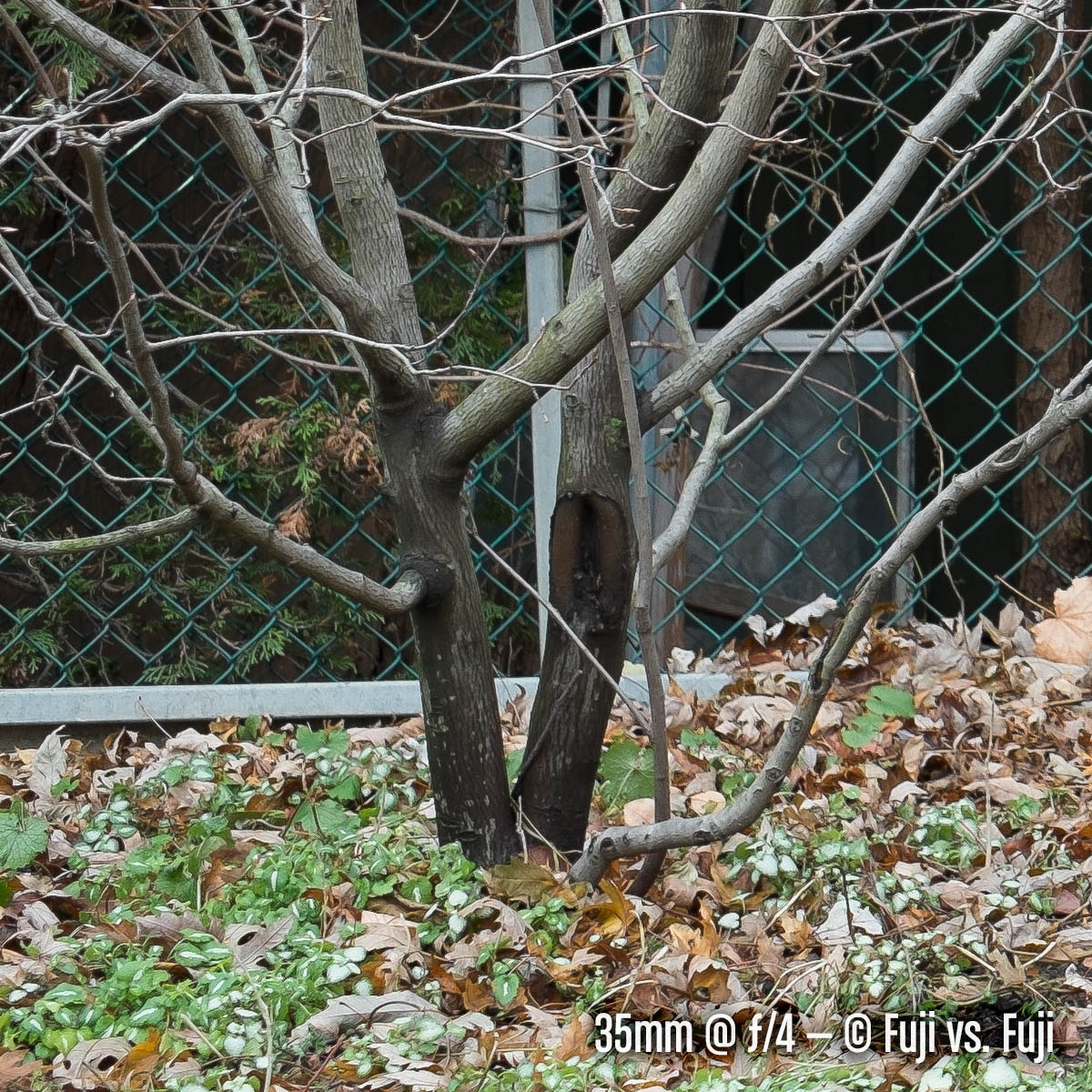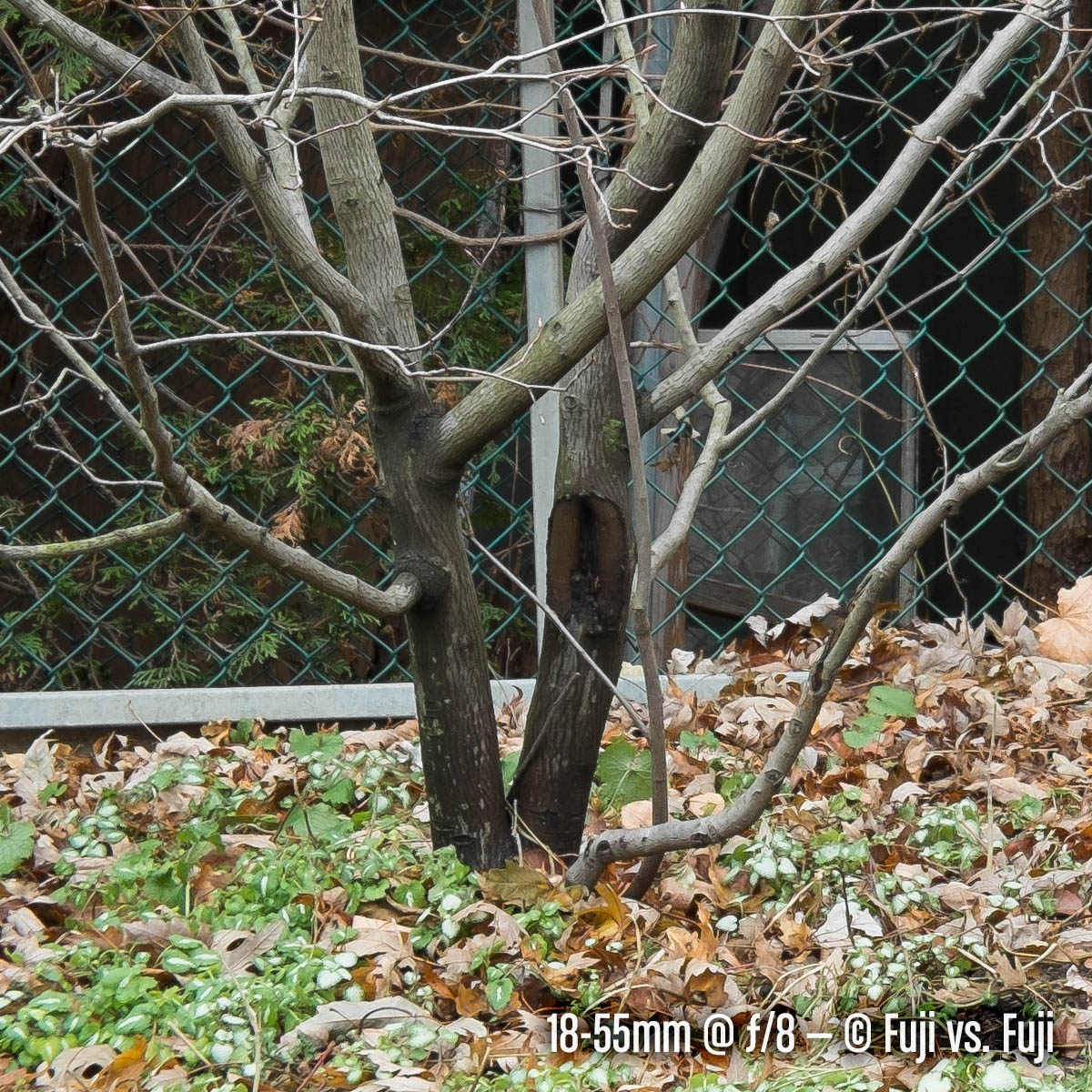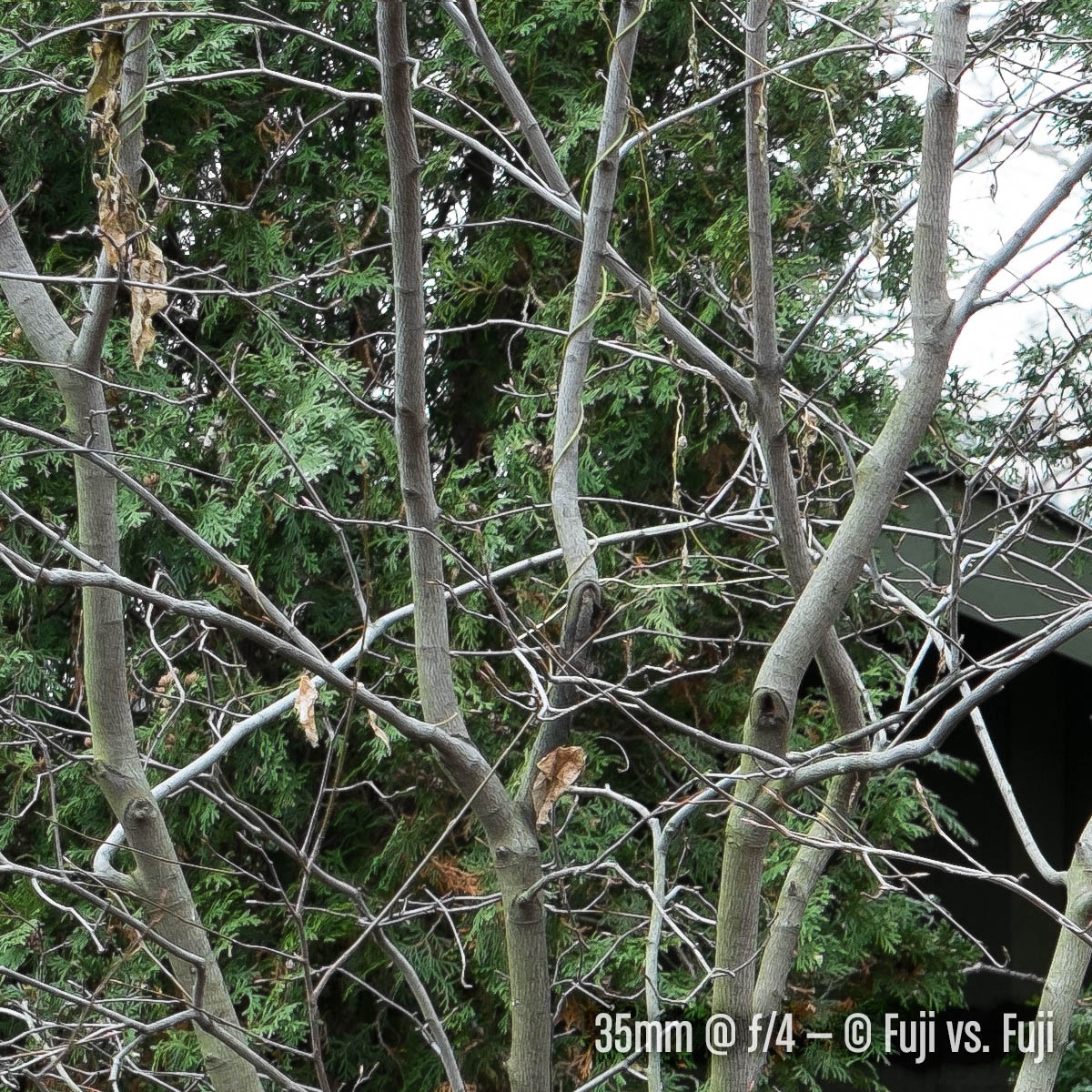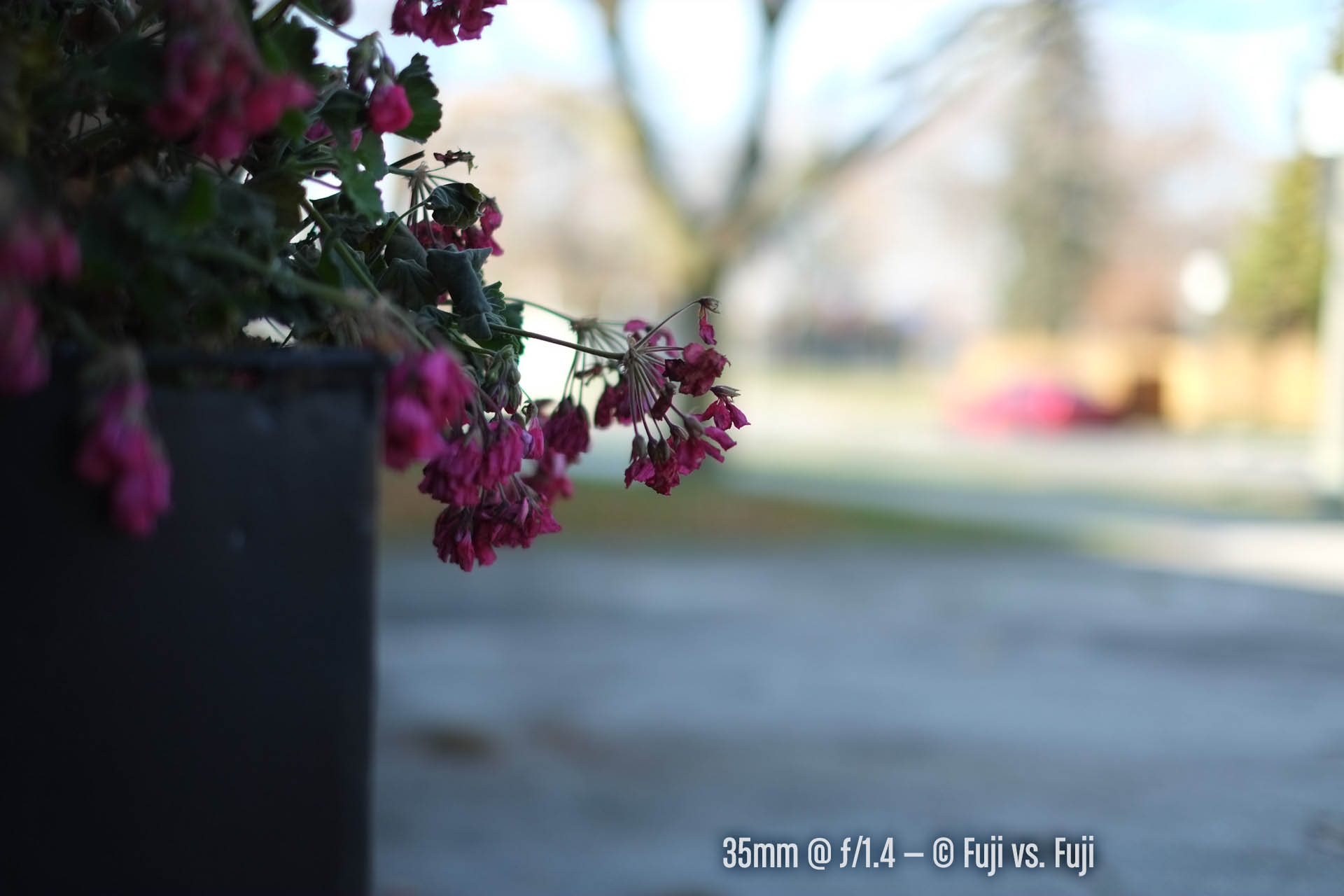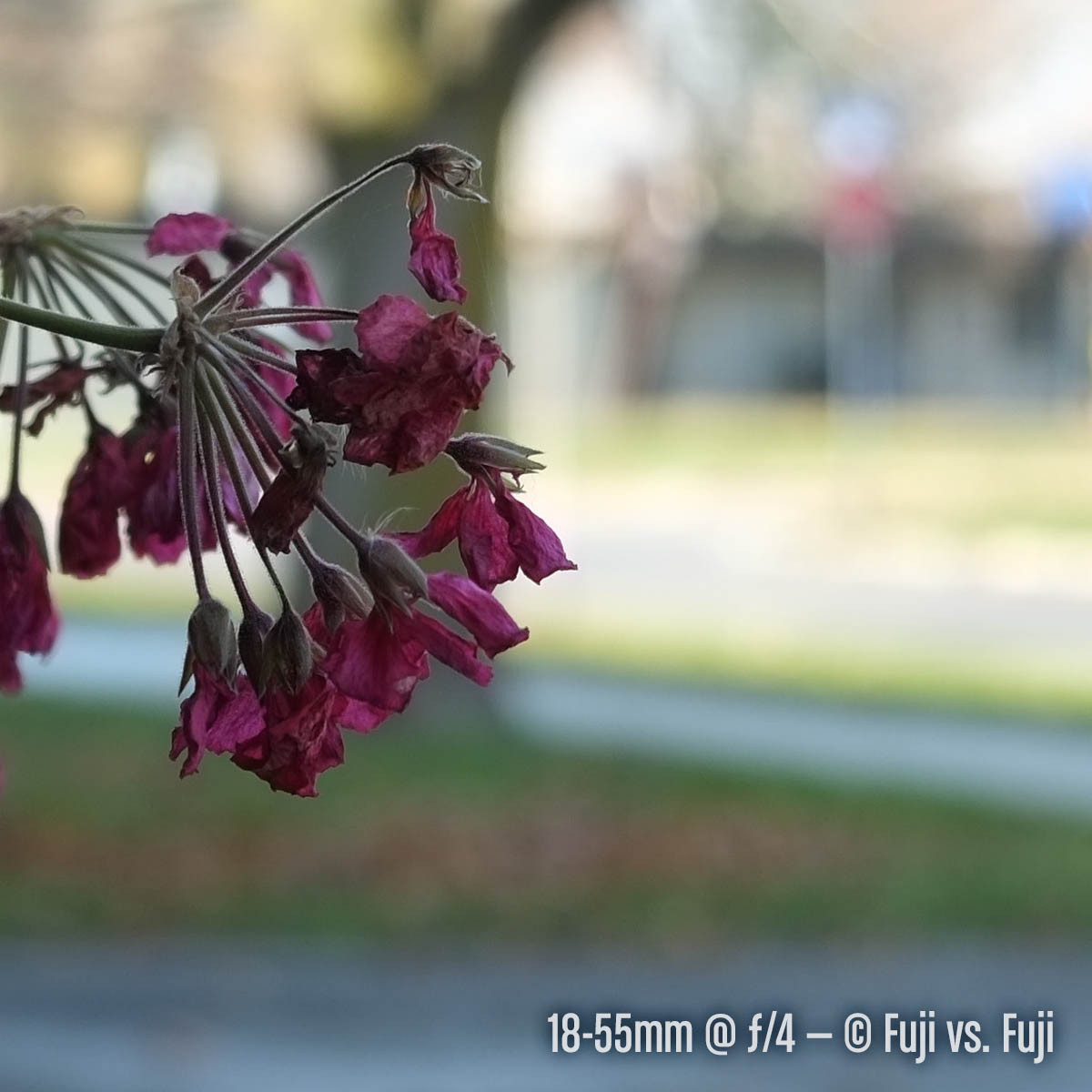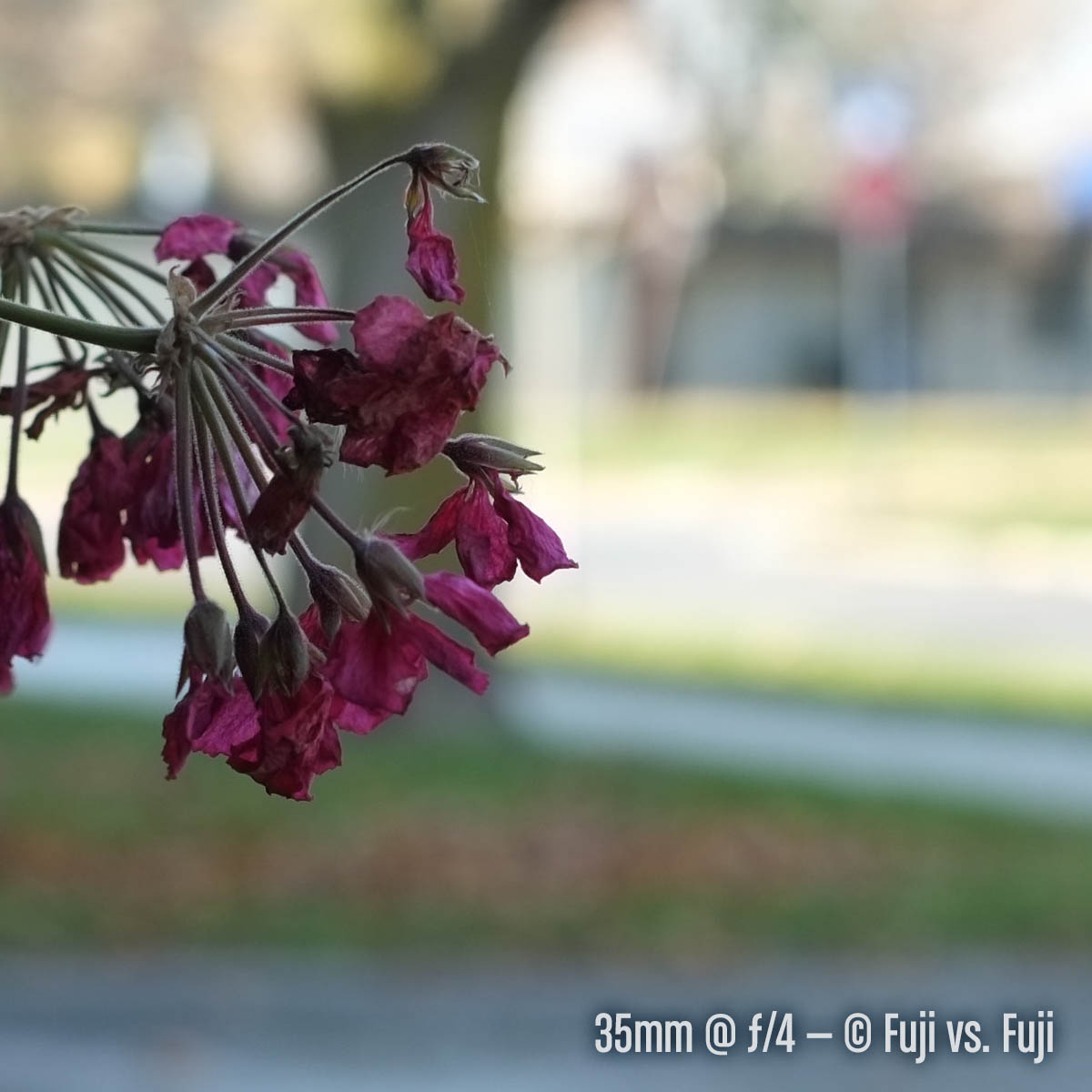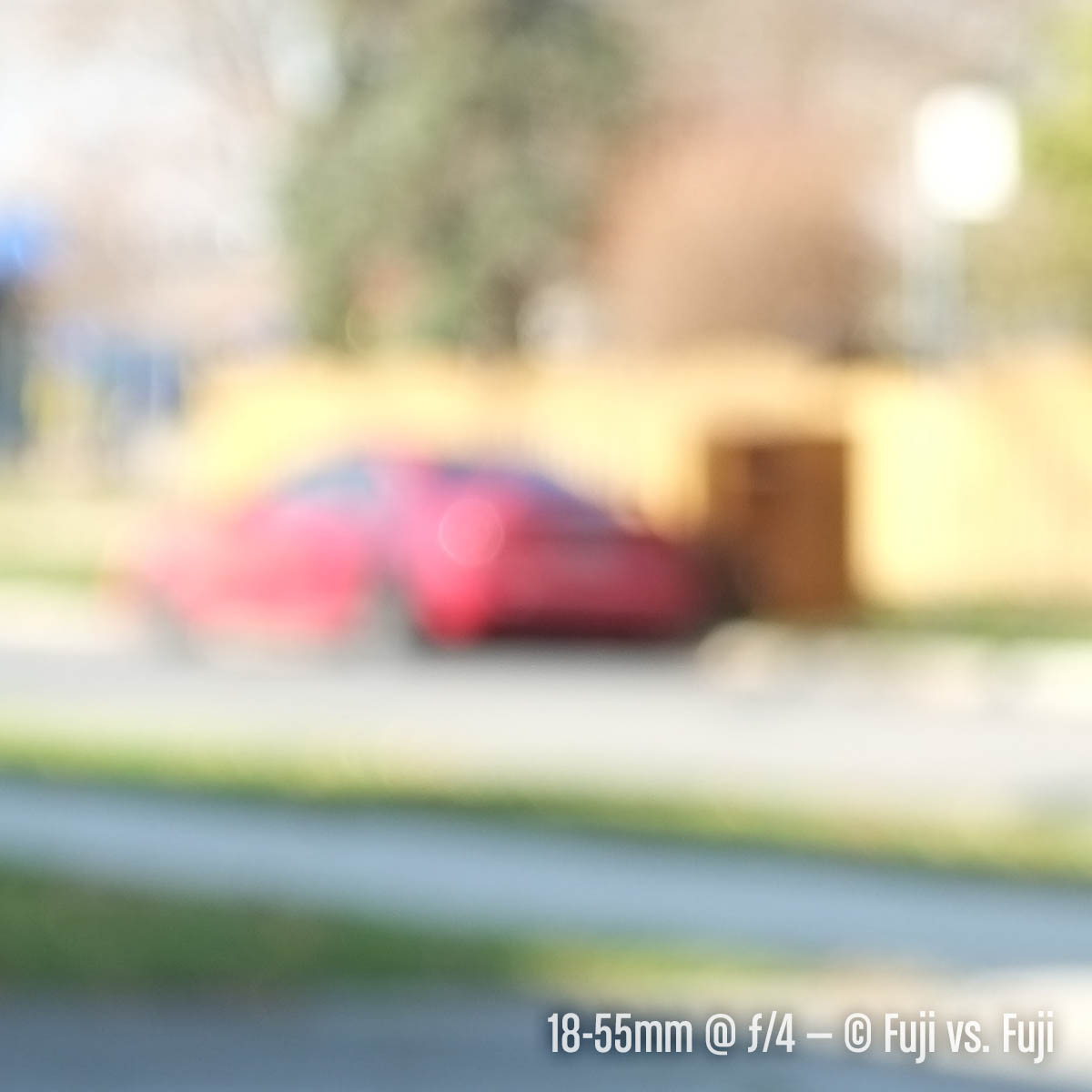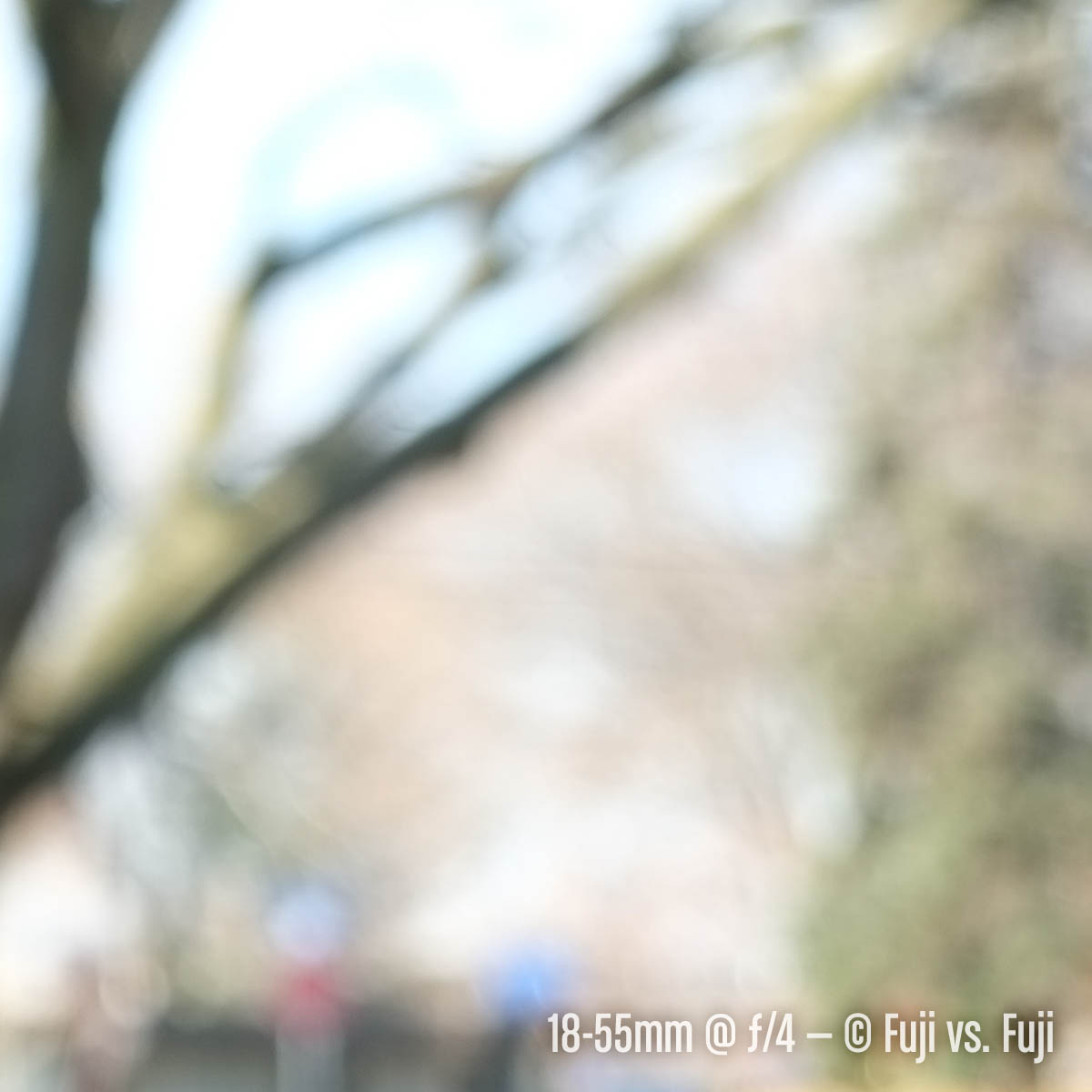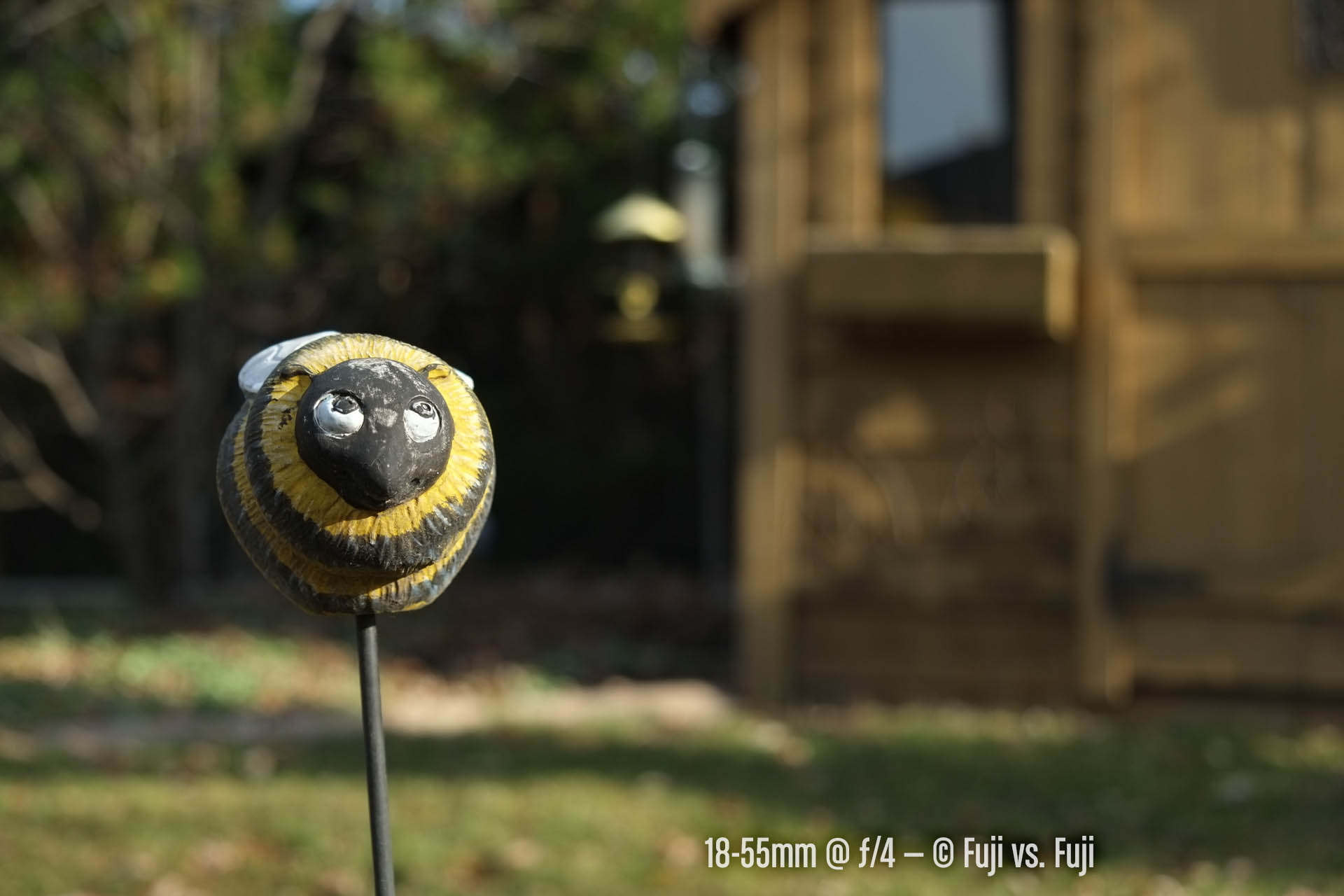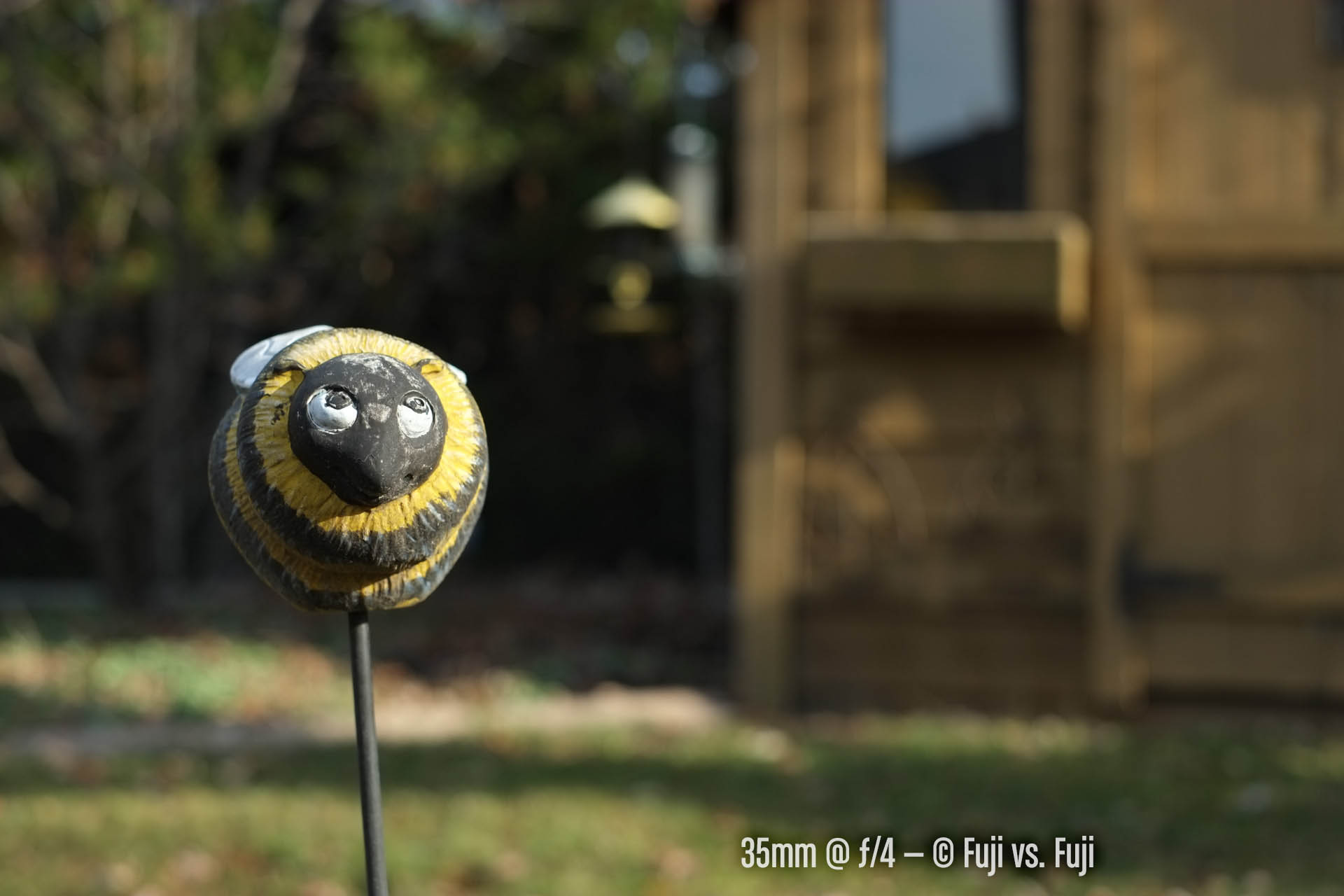Fuji XF 18-55mm F/2.8-4 vs. XF 35mm F/1.4, a comparison between the “kit lens” and 50mm equivalent prime.
Introduction
Fuji’s 18-55mm is regularly viewed as the non-kit lens kit lens. People rave about it’s sharpness, the quality of its bokeh. But if the zoom is so good, is the 35mm f/1.4 a worthy addition to your kit? Does f/1/4 alone justify the extra lens? We’re going to find out.
If you’d like to purchase one of these lenses, or anything else for that matter, please consider using one of the Amazon affiliate links below. The price is the same for you, but a small percentage of the purchase price goes to me, which really helps keep this site going. Thank you!
Specifications
| XF 18-55mm f/2.8-4 | XF 35mm f/1.4 | |
|---|---|---|
| Announced | September 6, 2012 | January 9, 2012 |
| Released | December, 2012 | February, 2012 |
| Price (MSRP) |
$699 | $599 |
| Lens Construction | 14 elements in 10 groups 3 aspherical, 1 extra low dispersion |
8 elements in 6 groups 1 aspherical element |
| 35mm Equivalent | 27 - 84mm | 53.2mm |
| Angle of View | 76.5° - 29° | 44.2° |
| Aperture Range | f/2.8 - f/22 | f/1.4 - f/16 |
| Focus Range | 0.6m (30cm wide, 40cm telephoto) - ∞ (Infinity) | 28cm - ∞ (Infinity) |
| Maximum Magnification | 0.15x | 0.17x |
| External Dimensions | 65mm diameter x 70.4mm - 97.9mm | 65mm diameter x 50.4mm long |
| Weight (Measured) | 308g 346g with caps and hood |
184g 205g with caps 218g with caps and hood |
| Filter Size | 58mm | 52mm |
Handling
The clear differences in handling are size, weight, and the addition of a split zoom and focus ring on the 18-55. With the 18-55mm set so the aperture is selected by the photographer, the two lenses handle very similarly. The aperture ring has satisfying clicks and the focus ring is nice and smooth, although somewhat thin on the zoom. The zoom also lacks aperture markings, but adds image stabilization of up to 4 stops according to Fuji. Fuji’s zoom lenses are switched to automatically change the aperture by way of a switch whereas their primes a set to auto by rotating the aperture ring one click past the smallest aperture.
The 35mm f/1.4 comes with a nice metal hood that seems to be very optmized for the lens. The two minor quibbles I have with it are it twists out of its locked position too easily and the rubber cap that comes with it will probably be left in you bag every time you take the lens out. Like I said, they’re minor, but in regular use they can become annoying.
The 18-55mm comes with a standard Fuji pinch cap, and a fairly large plastic bayonet hood. It also happens to be the same hood that comes with the 14mm f/2.8.
I’ve replaced both caps with Nikon caps which I prefer and if I need a more compact package I won’t hesitate to leave the hoods at home, except for when I’m capturing test images of course.
Sharpness
Below are images comparing lens sharpness. I’ve isolated f/4 and f/8 so you’re not wading through countless images and crops. The 35mm f/1.4 comes out on top, but the 18-55 holds its own. The story is the same at the other apertures.
You’ll probably notice there is a slight difference in colour temperature in these images. My WB was set too 5,000K for all images. It’s possible the sun peaked out a little more, but I think the 18-55 might render images a little bit warmer than the 35. In the “bee” images below, the yellows appear a little warmer on the 18-55 there as well. Click to enlarge.
The level of distortion with either lens looks to be minimal. If you arrow back and forth between the images, it’s exaggerated because the 35 shows the slightest bit of barrel distortion whereas the 18-55 has switched over to pincushion by this point in its zoom range.
Next we’ll look at some crops.
Focus was on the bird feeders. At f/4, both lenses are very sharp. The 35mm f/1.4 is definitely a little sharper. Look at the grain in the wood in particular. The 35mm f/1.4 is crazy sharp. Saying “for a zoom” sounds a tad dismissive, but in the case of the 18-55, for a zoom it performs really well.
At f/8, the FUJINON XF 18-55mm f/2.8-4 closes the gap, but the 35 remains a little bit sharper.
I’ll say again though, the X-Trans doesn’t appear to be having any trouble rendering detail in the green of the background hedges. Those concerns seem more and more overblown as I continue testing.
In the above images we’re right in the bottom left corner of the image. The extreme corners suffer a little bit with the zoom, but the edges hold up very well. I’ve seen folks claim the 35 isn’t very sharp out at the edges and corner. Well if these images don’t prove otherwise, I don’t know what will. To my eye, the edges and even the extreme corners are fantastic. I actually double-checked that I hadn’t cropped the 35 images.
It’s a similar story in the top left corner. The FUJINON XF 18-55mm f/2.8-4 stays quite sharp everywhere but the extreme corners. Again, the FUJINON XF 35mm f/1.4 is almost impossibly sharp to the very last pixels of the corner.
Interestingly, aberrations are kept in check noticeably better by the 18-55mm. Check the branches in the top right of these crops. This is an area that’s begging for CA, but the 18-55 shows (almost?) none, even at f/4, whereas the 35 shows a little at f/8 still. Impressive showing for the kit zoom.
Bokeh! (and Sharpness)
One the reported reasons why the FUJINON XF 18-55mm ƒ/2.8-4 is unlike a typical kit lens is the quality of its out of focus rendering.
Ignoring the slight difference in the actual focal length, the quality of the bokeh from the 18-55 @ f/4 is excellent compared to the 35mm f/1.4. However, if you’re looking to really isolate your subject, the FUJINON XF 35mm f/1.4 is outstanding at wider apertures.
In this example, you’d be forgiven if you can’t see any difference between the FUJINON XF 18-55mm f/2.8-4 and the FUJINON XF 35mm f/1.4 when shot at f/4. The 18-55 does an incredible job keeping up to the 35 here. The difference between f/4 and f/1.4 can’t be overstated though. The background just melts away into a sea of creamy bokeh goodness when the 35mm is opened up to 1.4.
At this distance, the 18-55mm may actually eke out a little more sharpness than the 35mm f/1.4.
Alright, here, if you look really carefully, you can see some minor differences between the 18-55 and 35 at f/4. There’s the slightest bit of “onioning” happening on the highlight from the rear light on the car with the zoom. The 35 is a little cleaner here and overall. Again, at 1.4, the background is unrecognizable.
One last portion of the image. There’s a very slight bit more nervousness with the zoom, but it’s negligible.
For this image I opened the 18-55mm up to f/3.6—which is as wide as it can go once you reach 35mm—and compared it to the 35 wide open. Also compared is both lenses at f/4. I was surprised at the difference between f/3.6 and f/4 on the 18-55mm actually. I didn’t think it would be as noticeable.
And for the pixel-peepers, here are some crops to compare sharpness. Again, the FUJINON XF 18-55mm f/2.8-4 holds up amazingly well. The 35 is showing what looks a little hazing and some aberrations, but this was a particularly contrasty scene. I shot this all with my exposure compensation dialed down 1 ⅓ stops to keep the white of the bee’s eyes from blowing out.
Conclusion
The result of these tests comes down to the typical trade-offs between primes and zooms. The zoom offers much more flexibility with a smaller aperture, while the prime offers slightly better picture quality overall in a smaller, lighter, and faster package, but at the expense of any other focal lengths. It can’t hurt to have both in your bag.

